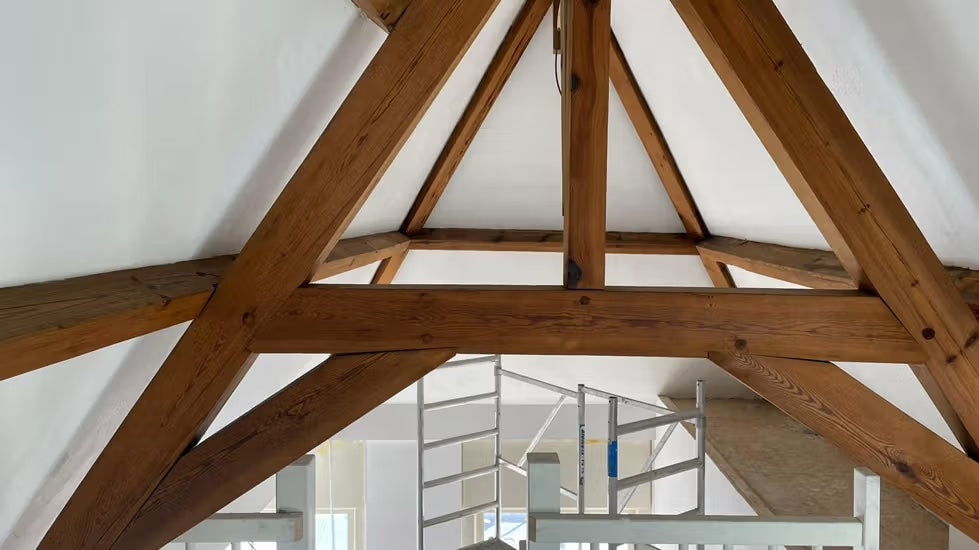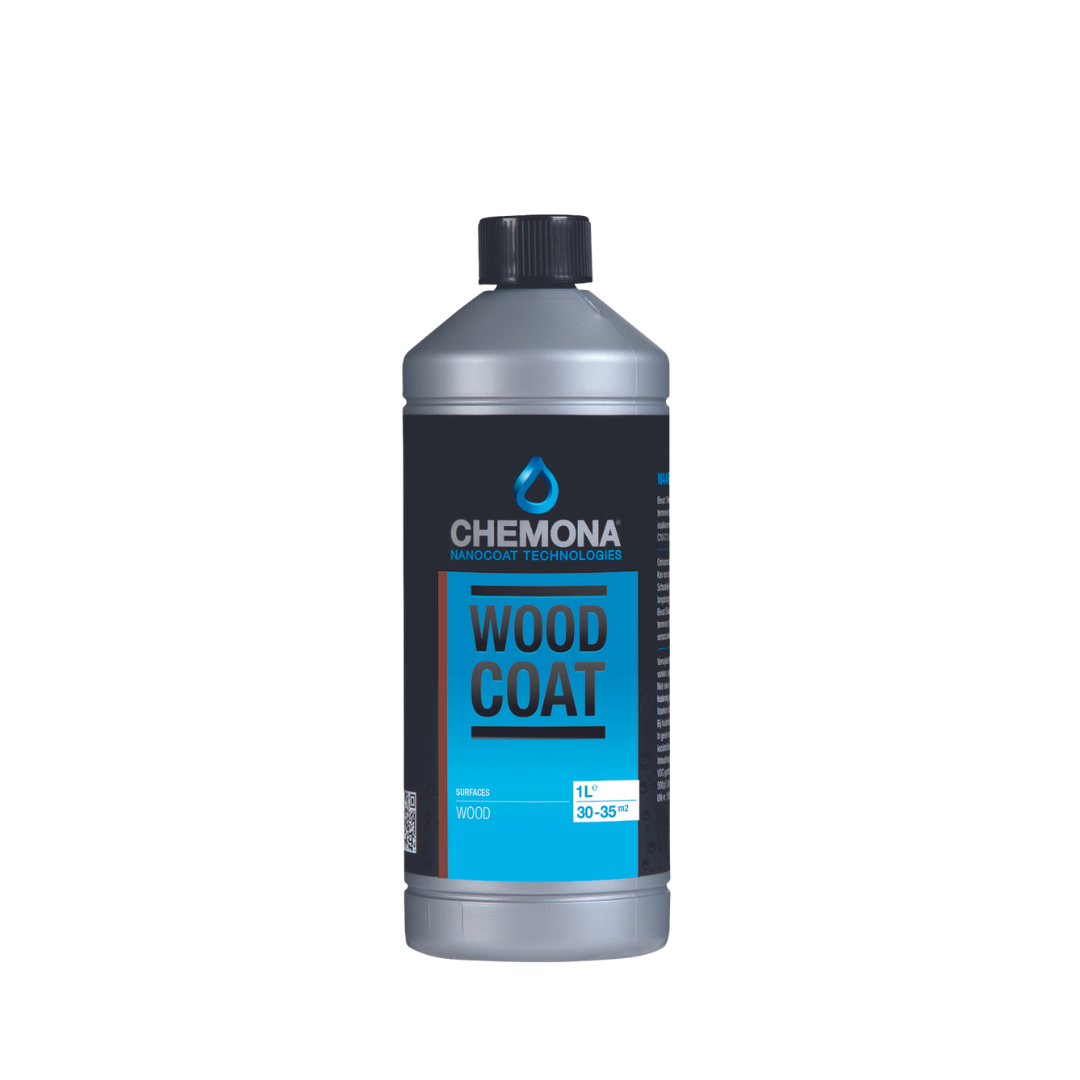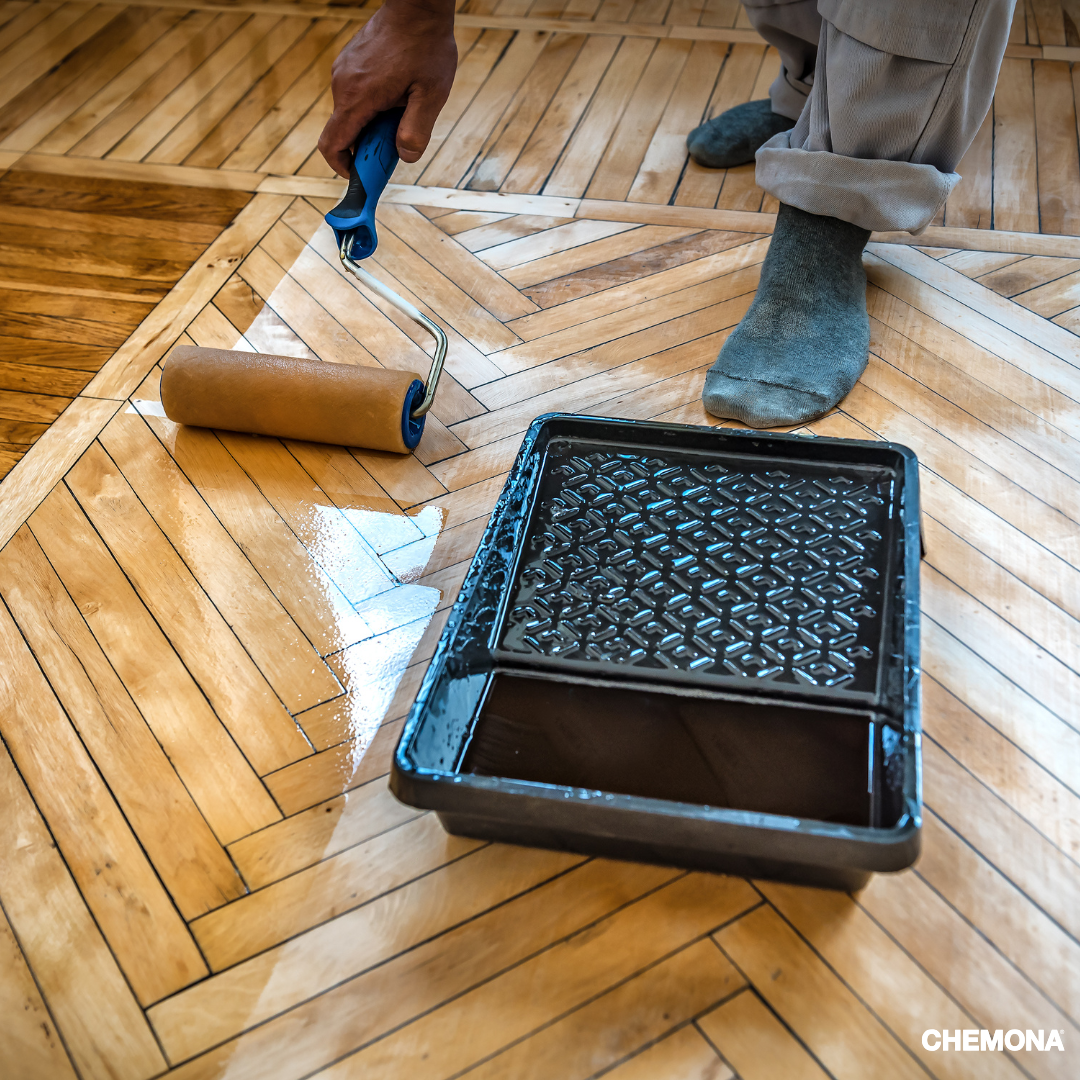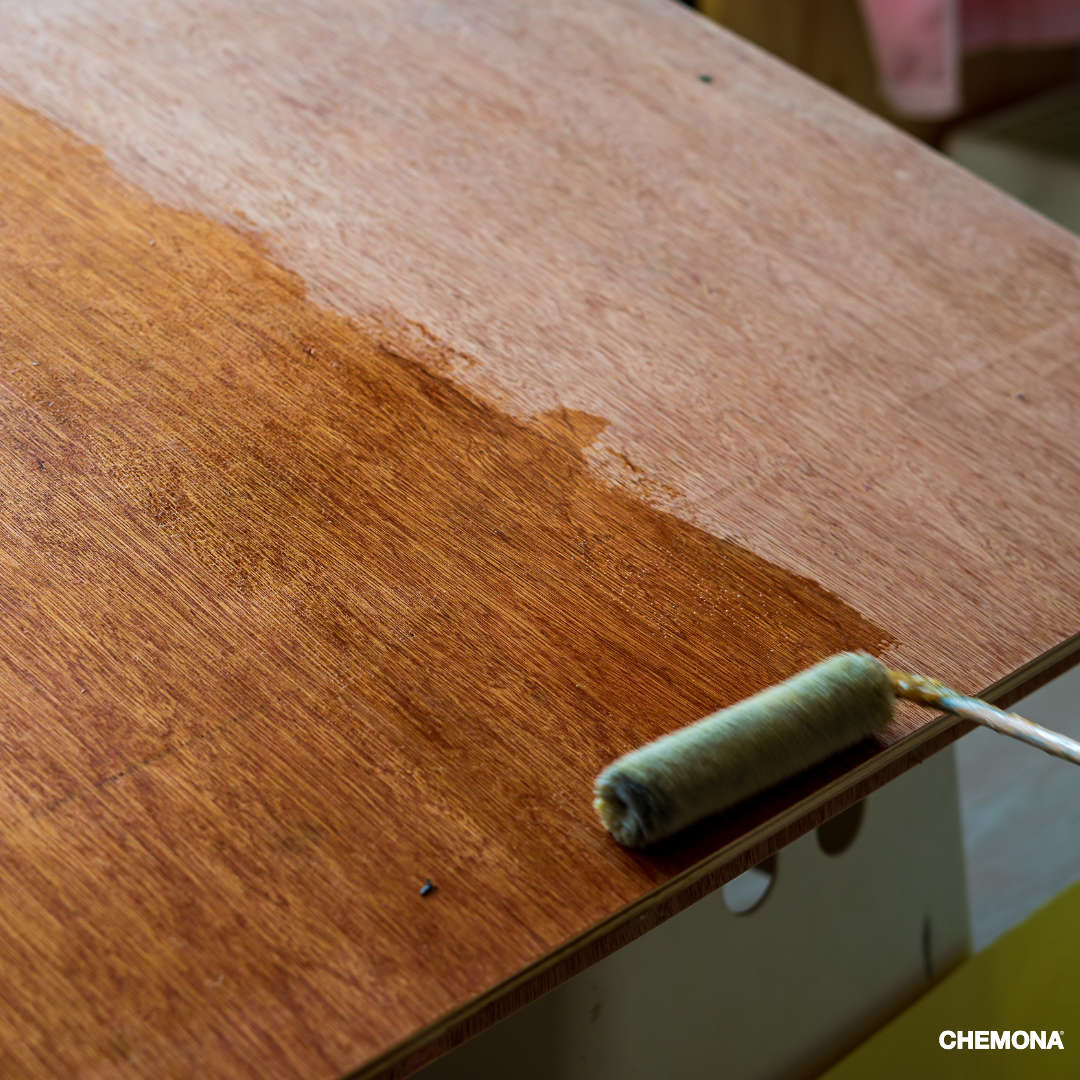Oak has traditionally been a popular material in construction because of its strength, durability and characterful appearance. In many monumental buildings, historic farms or industrial lofts, oak beams or exposed beams are the defining features. But even this robust type of wood is not immune to the effects of time. Due to decades of exposure to moisture, temperature differences, dust, grease, smoke or aged finishes such as lacquer, the natural appearance of the wood can fade or become clogged.
In this project, the old oak beams were therefore expertly restored and preserved. After removing old layers of lacquer, thoroughly sanding and cleaning, they were treated with Wood Coat, a modern wood protector that penetrates deep into the wood, nourishes and protects it, while retaining the natural character of the material.
Purpose and starting point of the treatment
The approach was aimed at:
- Making the original wood structure and grain visible
- Removing gloss layers, discolouration and dirt accumulation
- Providing protection against new moisture load and biological attack
- Giving the wood a natural, matt finish without film formation
- Making the joists fit in with a contemporary, atmospheric interior style
- Respecting the original authenticity and historical value of the material

Restoration process in steps
1. Removing old varnish or paint finish
A combination of paint strippers and mechanical sanding was used to carefully remove old layers without causing any major damage to the surface. This made the wood “breathable again”.
2. Deep cleaning and degreasing
To remove grease and dust residues, mould or smoke deposits from the surface, the wood was intensively degreased. This is crucial for the penetration of the new protective layer.
3. Applying Wood Coat
The joists were treated with Wood Coat, a breathable wood coating that:
- Is absorbed deep into the pores
- Protects the wood without leaving a gloss or varnish film
- Intensifies the colour without ‘colouring’
- Regulates moisture – no mould formation or flaking
- Hardly visible after drying – a purely natural result
What makes Wood Coat special?
- Non-film-forming: leaves the wood fully visible and tangible
- Prevents drying out – protects from the inside
- Environmentally friendly, solvent-free, low-odour and safe for indoor use
- Greys or ages naturally, without flaking
- Can be easily updated – without sanding or stripping
The treatment is therefore reversible, which is important for historically valuable buildings.
Architectural impact
The treated trusses form part of a structural and aesthetic framework. By restoring them in this way, the following is achieved:
- Preserves the historical integrity of the building
- A warm, natural atmosphere is added to the interior
- The contrast between old materials and modern elements is enhanced
- The visible trusses are once again a statement in the space
For monument conservation, repurposing and interior architecture, this is an example of how conservation and innovation can reinforce each other.



